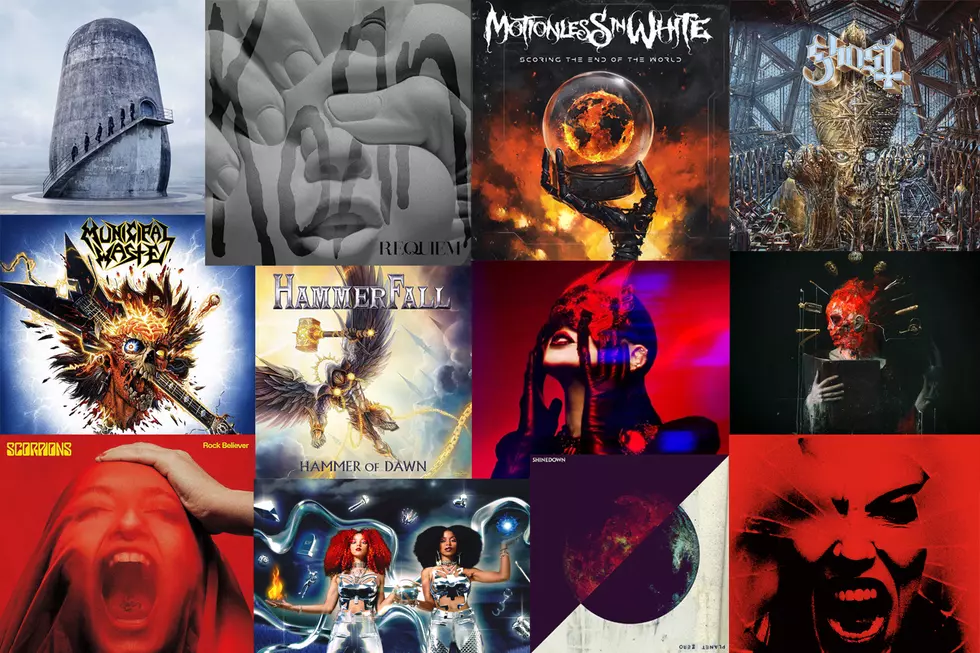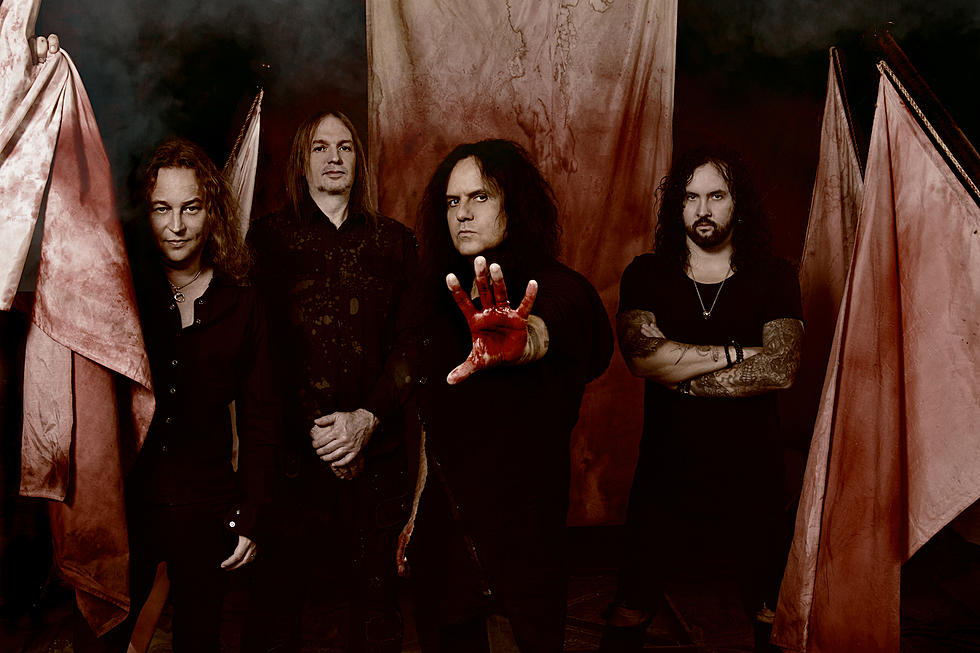
1986: The Year That Thrash Broke
1986 was a very good year for trailblazing thrash metal and quirky musical tangents that would have long-lasting impact. That year, young lions Metallica, Megadeth, and Slayer usurped the original old-school British masters, first on the streets and then in the record stores.
Basically, 1986 was the year that swords and sorcery were kicked out of the kingdom and replaced by a harsh dose of thrash reality, along with thousands of bullet-belted speed metal mavens worldwide. Meanwhile, crossover metalcore prospered, doom rumbled, progressive metal made its early marks, and the first screams of black and death metal were heard by anyone who was paying attention.
Although Anthrax were the first to break into the big time in 1985, 1986 brought the terrific thrash triumvirate of Metallica's monumental 'Master of Puppets' on Elektra, Megadeth's colorful 'Peace Sells... but Who's Buying?' on Capitol, and Slayer's stunning 'Reign in Blood' on Def Jam.
The thrash metal elite had made great strides since their early independent origins. All three bands were undeniable, competitive, and stunning. They didn't play thrash as a unified style: they lived it as an over-the-top ethos.
Megadeth - 'Devil's Island' from 'Peace Sells... but Who's Buying'
Today, we are spoiled by semi-permanent reunions and classic album tours, but in 1986, the first wave of metal royalty were ripe targets for takedown. Motorhead unleashed 'Orgasmatron,' the dawn of a new era for the original forefathers of thrash metal after three years of floundering. Likewise, Iron Maiden soared but shifted gears into elder mode on 'Somewhere in Time,' initiating an ambitious and almost progressive era for the band. Black Sabbath existed in name only, as Tony Iommi issued the less than stellar solo album 'Seventh Star.' Judas Priest appeared to have lost the metal plot entirely, wielding guitar synths and cheesy tunes on the 'Turbo' album -- a perverse curio today, but definitely not the stuff of teen dreams in 1986.
The up-and-coming legions were having none of that classic crap.
Behind Metallica, Megadeth, and Slayer, the landscape was flooded with thrash metal touchstones including Kreator's ultra-aggressive 'Pleasure to Kill,' Dark Angel's diabolical 'Darkness Descends,' Destruction's speedy 'Eternal Devastation,' Flotsam & Jetsam's lofty 'Doomsday for the Deceiver,' Onslaught's 'The Force,' Tankard's fun-loving 'Zombie Attack,' Coroner's tech assault 'Death Cult,' Nuclear Assault's mutant crossover spectacular 'Game Over,' Sepultura's dire 'Morbid Visions,' Sodom's ugly 'Obsessed by Cruelty,' and Voivod's ripping 'Rrroooaaarrr,' just to name a few. (I'll stop there, just to spare the feelings of younger thrash fans who are already weeping in their freshly-sewn denim patch jackets!)
Kreator - 'Death is Your Saviour' from 'Pleasure to Kill'
And so the torch was passed.
Caught in the middle between the old guard and the new breed was a unique kind of powerful band like Metal Church, stretching between past and present. In 1986, Mercyful Fate frontman King Diamond launched his solo career with 'Fatal Portrait,' combining thrash intensity with classic drama and breaking down the American audience with his quirky style. Meanwhile, the success of so many different approaches to metal provided a strong footing for the birth of progressive metal, as Fates Warning, Queensryche, and Crimson Glory all surpassed the expectations of the classic metal formulas.
Weirdness was in the air, although in a metal scene where the frontiers were still undiscovered, strange sounds were just part of the process of innovation and exploration. On the west coast of the US, LA's Hirax issued the hardcore punk and thrash metal fusion EP 'Hate Fear and Power,' LA's Cryptic Slaughter briefly took the world speed record with 'Convicted,' and Seattle's The Accused's lethal 'The Return of Martha Splatterhead' was reissued by Combat Records, letting loose Blaine Cook's revolutionary gargle-retch vocals.
Cryptic Slaughter - 'Lowlife' from 'Convicted'
Portland's Wehrmacht seemed to sum up the happy and violent high-speed fun with their 'Beermacht' release, which was only a demo tape. But in 1986, trading demo tapes were where it was at. After all, Death's 'Mutilation' demo, Mayhem's 'Pure F---ing Armageddon' cassette, and Morbid Angel's earliest efforts were already hinting at a darker future to come.
In the midst of all this hectic speed and energy, the doleful Candlemass emerged from the ever-active Swedish metal scene, a rare doom purveyor just as Scandinavia was heating up with death metal demos.
But Candlemass were a class above the snot-nosed Satanists of Nihilist, Morbid, and Norway's Mayhem. Candlemass represented something haunting and eternal, a rejection of 1986 trends in favor of a moss-covered classic power. As Daniel Ekeroth points out in his book 'Swedish Death Metal,' Candlemass' 'Epicus Doomicus Metallicus' debut was premiered on national Swedish radio on the night that news broke of the death of 24-year old bassist Cliff Burton on an icy Swedish highway, just weeks before 'Master of Puppets' became a certified gold record.
And so in 1986, metal found gravitas.
In the end, 1986 does not quite seem like twenty-five years ago because the best albums of that year are still with us. Metallica, Slayer, Megadeth, and Anthrax's Big 4 concerts will likely end up being highlights of 2011. Nuclear Assault are touring, Coroner have reunited, and Kreator will never play a concert without 'Pleasure to Kill.' The heroes of 1986 were bands that responded innately to metal's clarion call, musicians raised on Black Sabbath since infancy. They bypassed the record industry and spoke directly to the fans, with enthusiasm that worked on a gut level. No wonder we are still dealing with the fallout.
Metallica, Slayer, Megadeth and Anthrax playing 'Am I Evil?'
Ian Christe is the author of 'Sound of the Beast: The Complete Headbanging History of Heavy Metal,' and the publisher of Bazillion Points Books (Swedish Death Metal, Hellbent for Cooking, Metalion: The Slayer Mag Diaries).
More From Noisecreep









